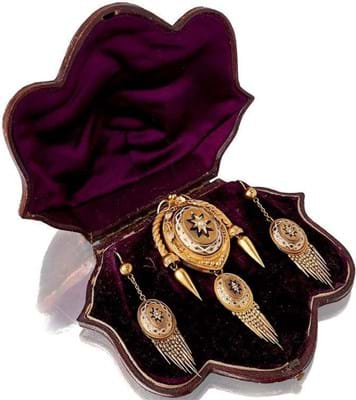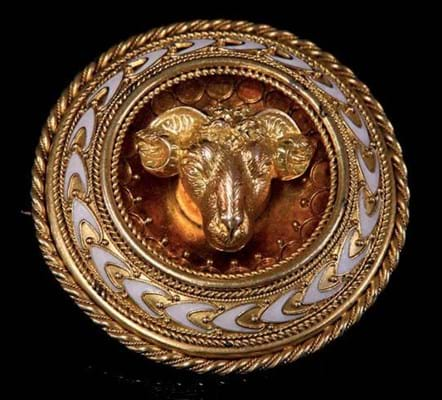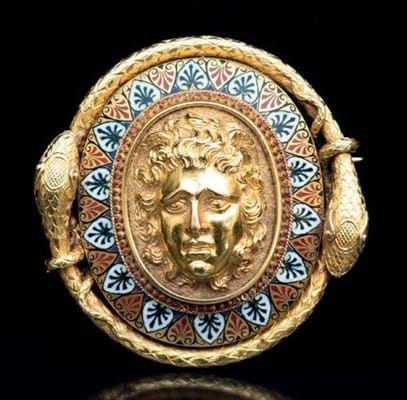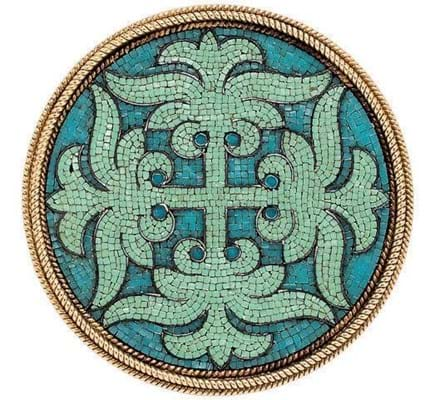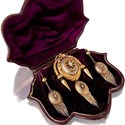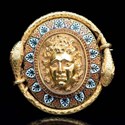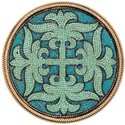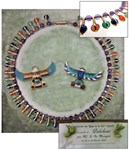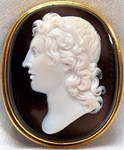The Rome goldsmith Fortunato Pio Castellani (1793-1865), invited by the papal authorities to study the 7th century BC jewellery found at Regolini-Galassi tombs in 1836, was the genre’s pioneer, its greatest exponent and, at a time of rising nationalism, its Italian champion.
However, the style was taken up by many 19th century jewellers who created their own pastiches of ancient, classical, medieval, and Renaissance jewels using the relearned techniques of granulation and filigree.
Pictured above are five examples, three sold at auction during lockdown and two coming up for sale next month.

